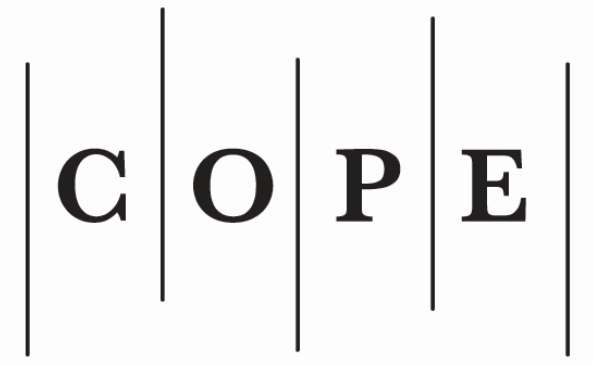Potential and Challenges of Web-based Collective Intelligence to Tackle Societal Problems
##plugins.themes.bootstrap3.article.main##
Abstract
Purpose – to research what are conditions and challenges for collective intelligence (hereinafter – CI), i.e., emerging applying social technologies, to tackle societal problems. Several objectives were set in order to achieve the goal: to analyze the scientific concepts of CI and its contents; to summarize possibilities and challenges of application of CI in largescale online argumentation; following theoretical attitudes towards CI, to analyze Lithuanian praxis of application of CI technologies in large-scale online argumentation.
Methodology – the methods of document analysis and content analysis of virtual community projects were applied. Theoretical analysis enabled recognition of CI phenomena and the variety of interpretations on CI as well as preconditions and difficulties to be tackled in order to ensure effective application of CI technologies in the processes of different policies design and/or societal problem solving. Having theoretical analysis as a base, the authors researched how the theoretical frameworks correspond to practices of Lithuanian virtual community projects, which are oriented to identification and analysis of relevant problems that communities are facing.
Findings – scientific documents analysis demonstrates the variety of possible interpretations of CI. Such interpretations depend on the researcher’s attitudes towards this phenomenon: some authors explain CI in a very broad sense not including the aspects of social technologies. However, in the last decades, with the emergence of the Internet, social technologies have become concurrent dimension of CI. The main principles of Web-based CI are geographically spread users and a big number of them. Materialization of these principles ensures variety of elements needed for emerging of CI. There are diverse web-based mediums, where CI is being developed. However, not all of them ensure collective action, which is obligatory for CI. Researchers have analyzed characteristics of diverse web-based projects, which include attributes of CI, and came up with relatively small number of common elements calling them CI genes, and combination of different genes was called genome. The genes were classified using two pairs of questions: who are performing tasks? Why they are doing it? And what is being done? How it is being performed? Responses to these questions gives information on what principles are followed when CI is emerging in a particular web-based project. This information is crucial when systems, which are oriented to emergence and application of CI, are being designed.
Different research evidence the potential of CI to contribute to solving of public issues. Specific virtual communication platforms are being designed for this purpose. Exploratory review of Lithuanian virtual community projects demonstrates a growing number of such projects and an increasing number of users joining these platforms. It is important that such projects enable identification of problems, discussion on them, search alternatives for problem solving, evaluate these alternatives and make decisions. The authors analyzed Lithuanian examples conforming to these requirements, such as virtual community projects Aš Lietuvai (I for Lithuania) ir Lietuva 2.0. (Lithuania 2.0). These projects encompass all the elements attributed to CI and its application for tackling social issues: the projects can attract geographically dispersed crowds, they have technological solutions allowing identification and discussion of problems, suggesting and voting on possible solutions, and decision making. However, the current research has not revealed if CI emergence in virtual community projects is acceptable and applicable in practice and actually influences policies.
Research limitations – case studies, which are presented in this paper, could be evaluated as synoptical and requiring broader and deeper research. In order to have explicit mosaic of web-based CI application for tackling societal issues, researches on dynamics of large-scale argumentation in virtual community projects is required. Also, it is important to investigate how results of CI are developed, to observe process and outcomes of consensus search, to follow implementation of CI “products”. However, for such surveys, theoretical background and initial analysis of cases are required. These aspects are covered in the current research.
Practical implications – the paper presents the concept and contents of CI genes and genome. Identification of genome of a particular CI platform could help organizers to arrange the performance of the virtual community project in the way that CI is being developed and the results are achieved effectively. The review of CI technologies and presentation of the challenges that are met when attracting crowds to online argumentation could help to envisage possible difficulties in operation of virtual community project and preventively search for solutions to tackle these difficulties.
Value – the research is original in the sense that it is oriented to exact dimensions of CI: attraction of crowds to create CI applying social technologies in order to identify collectively the most relevant societal problems and search for solutions to tackle them.
Research type: viewpoint.
Methodology – the methods of document analysis and content analysis of virtual community projects were applied. Theoretical analysis enabled recognition of CI phenomena and the variety of interpretations on CI as well as preconditions and difficulties to be tackled in order to ensure effective application of CI technologies in the processes of different policies design and/or societal problem solving. Having theoretical analysis as a base, the authors researched how the theoretical frameworks correspond to practices of Lithuanian virtual community projects, which are oriented to identification and analysis of relevant problems that communities are facing.
Findings – scientific documents analysis demonstrates the variety of possible interpretations of CI. Such interpretations depend on the researcher’s attitudes towards this phenomenon: some authors explain CI in a very broad sense not including the aspects of social technologies. However, in the last decades, with the emergence of the Internet, social technologies have become concurrent dimension of CI. The main principles of Web-based CI are geographically spread users and a big number of them. Materialization of these principles ensures variety of elements needed for emerging of CI. There are diverse web-based mediums, where CI is being developed. However, not all of them ensure collective action, which is obligatory for CI. Researchers have analyzed characteristics of diverse web-based projects, which include attributes of CI, and came up with relatively small number of common elements calling them CI genes, and combination of different genes was called genome. The genes were classified using two pairs of questions: who are performing tasks? Why they are doing it? And what is being done? How it is being performed? Responses to these questions gives information on what principles are followed when CI is emerging in a particular web-based project. This information is crucial when systems, which are oriented to emergence and application of CI, are being designed.
Different research evidence the potential of CI to contribute to solving of public issues. Specific virtual communication platforms are being designed for this purpose. Exploratory review of Lithuanian virtual community projects demonstrates a growing number of such projects and an increasing number of users joining these platforms. It is important that such projects enable identification of problems, discussion on them, search alternatives for problem solving, evaluate these alternatives and make decisions. The authors analyzed Lithuanian examples conforming to these requirements, such as virtual community projects Aš Lietuvai (I for Lithuania) ir Lietuva 2.0. (Lithuania 2.0). These projects encompass all the elements attributed to CI and its application for tackling social issues: the projects can attract geographically dispersed crowds, they have technological solutions allowing identification and discussion of problems, suggesting and voting on possible solutions, and decision making. However, the current research has not revealed if CI emergence in virtual community projects is acceptable and applicable in practice and actually influences policies.
Research limitations – case studies, which are presented in this paper, could be evaluated as synoptical and requiring broader and deeper research. In order to have explicit mosaic of web-based CI application for tackling societal issues, researches on dynamics of large-scale argumentation in virtual community projects is required. Also, it is important to investigate how results of CI are developed, to observe process and outcomes of consensus search, to follow implementation of CI “products”. However, for such surveys, theoretical background and initial analysis of cases are required. These aspects are covered in the current research.
Practical implications – the paper presents the concept and contents of CI genes and genome. Identification of genome of a particular CI platform could help organizers to arrange the performance of the virtual community project in the way that CI is being developed and the results are achieved effectively. The review of CI technologies and presentation of the challenges that are met when attracting crowds to online argumentation could help to envisage possible difficulties in operation of virtual community project and preventively search for solutions to tackle these difficulties.
Value – the research is original in the sense that it is oriented to exact dimensions of CI: attraction of crowds to create CI applying social technologies in order to identify collectively the most relevant societal problems and search for solutions to tackle them.
Research type: viewpoint.
##plugins.themes.bootstrap3.article.details##
Section
Articles
- The Author grants to the Publisher the exclusive right and licence to publish this Article without remuneration until the expiry of the economic rights: to reproduce the article in print and digital form, including its publication; to disseminate the original version of the Article or its copies in Lithuania and foreign countries; to translate the Article; to publish the article, including making it publicly available via computer networks; to reproduce and publish the Article in Lithuanian and foreign databases; to licence usage of the Article in ways described in this paragraph.
- The Author warrants that the economic rights of the Author have not been assigned or granted to third parties, that the Article has not been published so far and is not under consideration of being published elsewhere.
- The Author warrants that the Article does not violate intellectual property rights of others.
- After the Article is published in Social Technologies the Author shall have a right to make it public on personal website or on a website of an institution of affiliation, to reproduce it for non-commercial teaching or scholarly research purposes, clearly indicating that the primary source of its publication is Social Technologies.
- This consent shall be considered invalid if the Editorial Board of the Social Technologies decides not to publish the Article.
Authors contributing to Social Technologies agree to publish their articles under a Creative Commons Attribution 3.0 Unported (CC BY 3.0) Licence, allowing third parties to share their work (copy, distribute, transmit) and to adapt it, under the condition that the authors are given credit, and that in the event of reuse or distribution, the terms of this licence are made clear.







